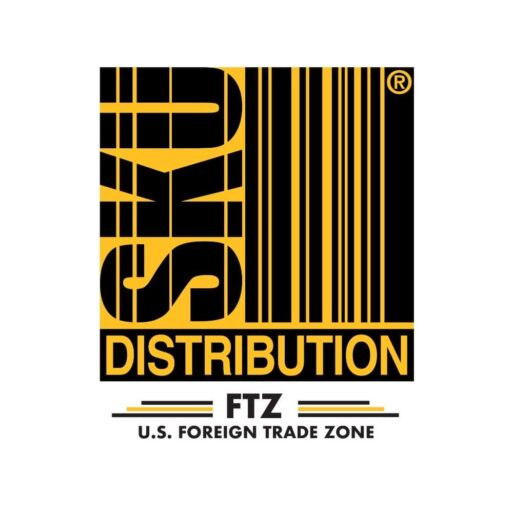When you have an eCommerce business, there’s nothing that matters more than your stock—not running out of it, and organizing your inventory.
Now, there’s a lot of ground to cover in eCommerce beginners’ guides, but today we’re starting off with the most important thing of them all:
SKU numbers.
Let’s dive in!
What Is an SKU Number?
Once you start running an eCommerce business, chances are you’ll have a lot more stock than what you can keep track of manually.
Now, items will start flying off the shelves, you’ll start having to ordering and ship more, and you’ll be overloaded. If you have an efficient way to track individual items, things are going to be a lot easier.
And that’s what SKU numbers are here for.
SKU, short for Stock Keeping Unit, is defined as an alphanumeric code that you can use to keep track of individual items in your stock. These numbers are often found on the bar code sticker.
Let’s say you’re carrying jeans in different colors.
Without an SKU system, you won’t automatically know which item should be shipped according to the order.
But with an SKU number, you’ll know exactly which item fits the specification (red jeans, size XL) and should be shipped.
At the same time, having everything organized with an SKU system will help you keep track of your inventory more accurately.
In addition to representing individual items, SKU codes can also represent different product characteristics:
- Size
- Item location
- Color
- Brand
- Model
And so much more!
For example, if you’re selling jeans in two different models and two colors, your SKUs could look something like:
J01-B-001 (Jeans model 1 blue item 1)
J02-G-001 (Jeans model 2 green item 1)
SKU vs. UPC
If you’re an eCommerce business owner or you’ve read up on the terminology, you’ve probably come across UPC – Universal Product Codes.
But an SKU is not the same as a UPC. UPCs are only legible by barcode scanners. On the other hand, people should be able to read SKU numbers. Also, they are specific to your business.
Related: SKU Distribution – The Ecommerce Solution
Why Are Stock Keeping Unit Numbers Important?
Ultimately, SKU numbers are important because of organization.
It’s much easier to fulfill orders and manage inventory when you have a defined system for distinguishing between different products.
1. Add your SKUs to your inventory management systems
From there, you can track the product’s entire lifecycle from the moment it hits the shelf to the moment it reaches the end customers.
By setting up an SKU system, you will be able to:
- Track your inventory
- Record losses and profits
- Improve the accuracy of your warehousing
- Make better decisions about your inventory
- Streamline the way you buy, store, and sell items
2. SKUs make stocktaking much easier
When every item you sell has a unique SKU code, you’ll know exactly where everything is.
And if you’ve been using your SKU codes for your inventory management and order fulfillment, your stock levels will be identical to what you’ve expected them to be.
3. If you know where your products are at any given moment, you’ll reduce the risks of theft or damages
Items often go missing in warehouses, either due to mistakes or outright theft.
And when you SKU-tag your items as soon as you order them, you’ll know where they are or where they’re going missing.
It’s like eCommerce forensics!
4. Worried about going out of stock?
If you use the SKU system to keep track of your products, you’ll know when to replenish them.
Over time, you can even devise a reordering system that automatically orders a new shipment of particular products when their levels are too low.
And how are you going to know you’re running out?
With SKUs, of course.
5. Stock keeping unit numbers help you track and improve sales
If you know which particular products are selling well generally or during particular seasons, you’ll know what your cash cows are.
It’ll be easy to order more products and boost your revenue by marketing them.
Without SKUs, it’s much harder to track the sales of individual product types and variations.
But once you tag them, you’ll recognize if those red jeans in size L really are the lifeblood of your eCommerce business.
6. Marketing and remarketing with SKUs is simple
If you know that potential customers are looking for particular products on your site, you can use their SKU codes to reach them again with ads and make sure you’re not losing sales.
How Are SKUs Used in eCommerce?
While SKUs are used by big brands to track down and monitor products and their levels, they are particularly important for eCommerce business owners.
They’re an efficient way of tracking your products regardless of their physical location or life cycle state.
Third-Party Fulfillment and SKUs
When you opt for a third-party fulfillment provider, you’re paying a different company to store and ship your products.
In order to determine the storage space and track your products, third-party fulfillment providers need to know about your SKUs.
When third-party fulfillment providers know your SKUs, they can offer you:
- Automatic inventory sync
- Order and shipping tracking
- Real-time inventory counts
- Reordering points
- In-depth analytics
And much more!
All of these perks and features are only available if you’re using SKU codes. If you’re not, the third-party provider doesn’t have much to go on.
Not to mention that you’ll have a hard time keeping track of your inventory.
In general, SKUs are used to improve your relationships with different vendors, such as third-party fulfillment providers and anyone else you choose to bring on board.
When you have a standardized system of marking and tracking your products, doing business with your eCommerce store becomes much easier.
And in turn, that magic of organization will give you a revenue boost.
SKL Distribution is one such fulfillment provider. It will assist your business in picking, packing, shipping, storage, and even product returns, executing your fulfillment needs hassle-free.
Related: What Is a Fulfillment Center?
Creating SKU numbers.
You can make an SKU code any way you choose.
However, it’s important to devise a methodology for creating SKUs and tagging items with them.
Barcodes may be used for automatization and stock keeping unit software, but your SKUs should be easily understood by you and employees. Carefully planning a number sequence that corresponds to product qualities will help everyone involved in the delivery process.
When you see an SKU, you should be able to gauge exactly which item it denotes.
So how do you actually do that?
1. Use Your Inventory System or Generate SKUs Yourself
There are two ways of creating SKU numbers: you can create them yourself, or you can use your inventory management system to generate it for you.
You can also keep your digits random.
However, it’s much better to give SKU digits some meaning.
Just consider it – here’s an SKU number example. Which version would hold more meaning for you if you were to SKU-tag a pair of red jeans in size XL?
1) AD-89-GGZ
2) J-R-XL-01
Chances are, it’s the second kind. And the same goes for your (or your third-party fulfillment partners’) warehouse workers.
2. SKU Logistics – Making Sense of the Numbers
As a rule of thumb, each digit pair should hold some meaning and define certain categories.
For example, a pair could describe the color of an item, a size, or something similar.
In our previous example, J-R-XL-01, J stands for product type. R stands for the color. XL stands for the size.
And finally, 01 stands for the individual item itself.
The last digits in your SKU should always be item codes, and you should generate them in a sequence.
This makes it much easier for warehouse workers to pick up and ship, and you’ll be able to track your items more accurately, as well as market them and ensure that there are never any mistakes when customers want to order a product.
If you order your SKU code by categories from top to bottom, you’ll easily generate new product SKUs, and know exactly what each digit pair means.
You can also use numerical values.
However, that can get confusing if you have different sub-categories for your product SKU codes (such as size, color, etc.).
If you only carry products that don’t come in a variety of models, you can create an SKU code such as:
100012.
In that code, 10 could stand for the product type (e.g. accessories), 00 for the product sub-type (wallets), and 12 could stand for particular item code.
Again, numerical SKU codes are great if you’re shipping and selling simple products.
If you’re selling complex products that come in a wide variety of makes and models, it’s best to have an alphanumerical system where each digit has an easily understandable meaning.
For example, if you have to distinguish between the department, category and color of an item, you could tag it as:
M-S-P-001
In this SKU example, M stands for men’s clothing, S stands for sportswear, P stands for the color (purple), and 001 denotes the particular item.
Additionally, you should order the digit groups according to importance.
Start with the broadest category (sportswear) and then branch down to other specifics such as color and size.
After all, SKUs aren’t made for robots. They’re made for people. Make sure you have a logical way of assigning them to items.
3. Never Start Your SKUs with 0
It’s generally not a good idea to start your SKU with 0.
Various software disregards it and instead starts off with the next number or letter in the sequence.
This can create a lot of confusion if you’re using SKU codes across software and sharing them with third-party vendors, so it’s best to start with a different number or a letter.
Similarly, avoid using letters that can be mistaken for numbers.
In some cases, you or warehouse workers will need to write down your SKUs; be careful when choosing the letters. You should be able to read SKU numbers easily whether they’re printed or handwritten.
4. Have a Set SKU Formula
The easiest way to avoid worrying about SKU codes and make them efficient is by creating a set formula that accommodates your business’ specifics.
If you’re always starting with the broadest category and branching into sub-categories, stick to that as you implement new product SKU categories and tag new items.
Similarly, if you’re using only letters to denote different descriptors of individual items, keep using that. Don’t suddenly start marking them with numbers or words.
Finally, SKU codes should be memorable.
Avoid making them a jumble of words and numbers.
Instead, make sure that you and partners can gauge meaning from just one glance at the SKU tag.
5. Tie Your SKUs into User Experience
SKU codes are not meant to improve user experience directly, but they can affect it indirectly.
If your SKU order follows the same order and hierarchy on your website, the code can contribute to the feeling of being organized and allowing searchers to easily find the items they want to buy.
Finally, if you always know how many items you have on hand and where they are, you won’t struggle with cart abandonment just because you’re out of stock.
You won’t go out of stock.
Period.
6. Automate Everything
If you want to completely automate your business, SKUs can be a great asset.
You can use them for everything, from orders to marketing:
- An item enters your warehouse.
- It’s tagged with a specific SKU number.
- A customer visits your website and buys that product.
- Your website sends a signal to your warehouse and your inventory management system that the item has been selected.
- The item is picked, packed, and shipped.
- Your inventory management system is automatically adjusted for that item, while the stock keeping unit software measures your inventory levels.
- If the product is selling fast, a new order will be placed.
- You can set up email marketing campaigns to send discounts and offers for similar products to people who’ve bought the product with that SKU.
You can also use Stock Keeping Unit software to further improve the shipping process.
7. Multiple Warehouses? No Problem
If you’re selling in different locations or shipping from different warehouses, you can use your SKU code to optimize the process.
For example, you may have a warehouse in China for customers in China, and a warehouse in Germany for customers in Europe. An SKU number can help monitor inventory levels in different locations.
This way, a customer from France will always be able to order items from the German warehouse instead of waiting for the same product in China to be packed.
Again, very few operations are impossible where SKU codes are concerned.
It’s all possible with a little SKU magic.



